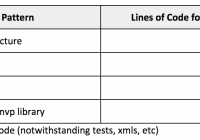AndroidX migration in a nutshell
Why AndroidX By the introduction of AndroidX, clear distinction is now made between the operating system packages and the support libraries or dependencies used to extend it. Going forward, the former (android OS) is going to be inside android and the support libraries inside androidx package hierarchy. Not only does this make things clearer but it also enables… Read More »


